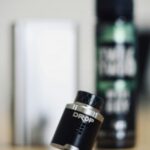How Different Cotton Densities Affect Wicking
Introduction
The world of vaping has rapidly evolved, with enthusiasts constantly exploring various components to enhance their experience. Among these components, cotton plays a crucial role, particularly in constructing coils and wicking systems. With cotton being a vital medium for transporting e-liquid from the tank to the coil, understanding how different cotton densities affect wicking performance is essential. This article delves into the intricacies of cotton density and its impact on the efficiency of wicking in e-cigarettes.
The Importance of Cotton in Vaping
Cotton serves as the primary material for wicking in most vaping devices due to its natural properties and impressive absorbency. The effectiveness of cotton in pulling e-liquid to the heating coil greatly influences the overall flavor and vapor production. မည်မှျပင်, not all cotton is created equal; variations in density can significantly alter the wicking process. As such, the choice of cotton density can make or break a vaporizer’s performance.
Understanding Cotton Density
Cotton density refers to the compactness of the cotton fibers used in vaping applications. The denser the cotton, the tighter the fibers, which can influence the speed and efficiency of wicking. On the other hand, less dense cotton allows for quicker absorption but may not retain liquid as well once saturated. Here, we explore how these variations can affect vaping experiences.
Effects of Low-Density Cotton on Wicking
Low-density cotton is characterized by relatively loose fibers, which facilitate fast wicking capabilities. This means that e-liquid can be absorbed quickly, supporting high initial vapor production. ဥပမာအားဖြင့်, when using a low-density cotton wick, users often report a more immediate flavor response when activating their devices. မည်မှျပင်, this rapid absorption can lead to quicker drying and potential dry hits if not continuously saturated.
Advantages and Disadvantages of Low-Density Cotton
While low-density cotton allows for quick wicking, it can also come with drawbacks, such as:
- Faster draining of e-liquid during extended puffs.
- Inconsistent flavor if the wick dries too quickly.
- Potentially higher risk of dry hits.
Based on these points, low-density cotton might be favorable for vapers seeking immediate flavor bursts but requires careful monitoring to avoid dry hits.
Effects of High-Density Cotton on Wicking
In contrast, high-density cotton features closely packed fibers. This density results in slower wicking rates but offers superior liquid retention. Users often find that a high-density cotton wick can sustain longer vaping sessions without the risk of running dry. ထို့အပြင်, the dense structure can provide a more consistent flavor profile over time.
Advantages and Disadvantages of High-Density Cotton
The benefits and pitfalls of high-density cotton include:
- Long-lasting saturation, reducing the risk of dry hits.
- Consistent flavor delivery over multiple puffs.
- Slower initial wicking, which might hinder immediate flavor responsiveness.
Consequently, high-density cotton may appeal to vapers who prioritize sustainability and flavor consistency during longer vaping sessions.
Comparative Analysis of Cotton Densities
To illustrate the differences in performance more clearly, the following table summarizes key attributes of low-density versus high-density cotton in wicking applications:
| Attribute | Low-Density Cotton | High-Density Cotton |
|---|---|---|
| Wicking Speed | Fast | Slow |
| Flavor Consistency | Variable | High |
| E-liquid Retention | Low | High |
| Dry Hit Risk | Higher | Lower |
This comparison allows vapers to make informed decisions based on their personal preferences in flavor intensity and session duration.
Practical Implications for Vapers
Considering the impacts of cotton density, vapers may want to experiment with different types of cotton based on their usage patterns. For those who prefer quick bursts of flavor and frequent re-wicking, low-density cotton may be the ideal choice. တပြိုင်နက်, users who enjoy extended sessions with consistent flavor might find high-density cotton to be more advantageous.
As vapers continue to explore the nuances of their craft, understanding how different cotton densities affect wicking will undoubtedly lead to improved vaping experiences. By choosing the right cotton density to match personal preferences, vapers can fully optimize their devices for better flavor, vapor production, and overall enjoyment.
“`






